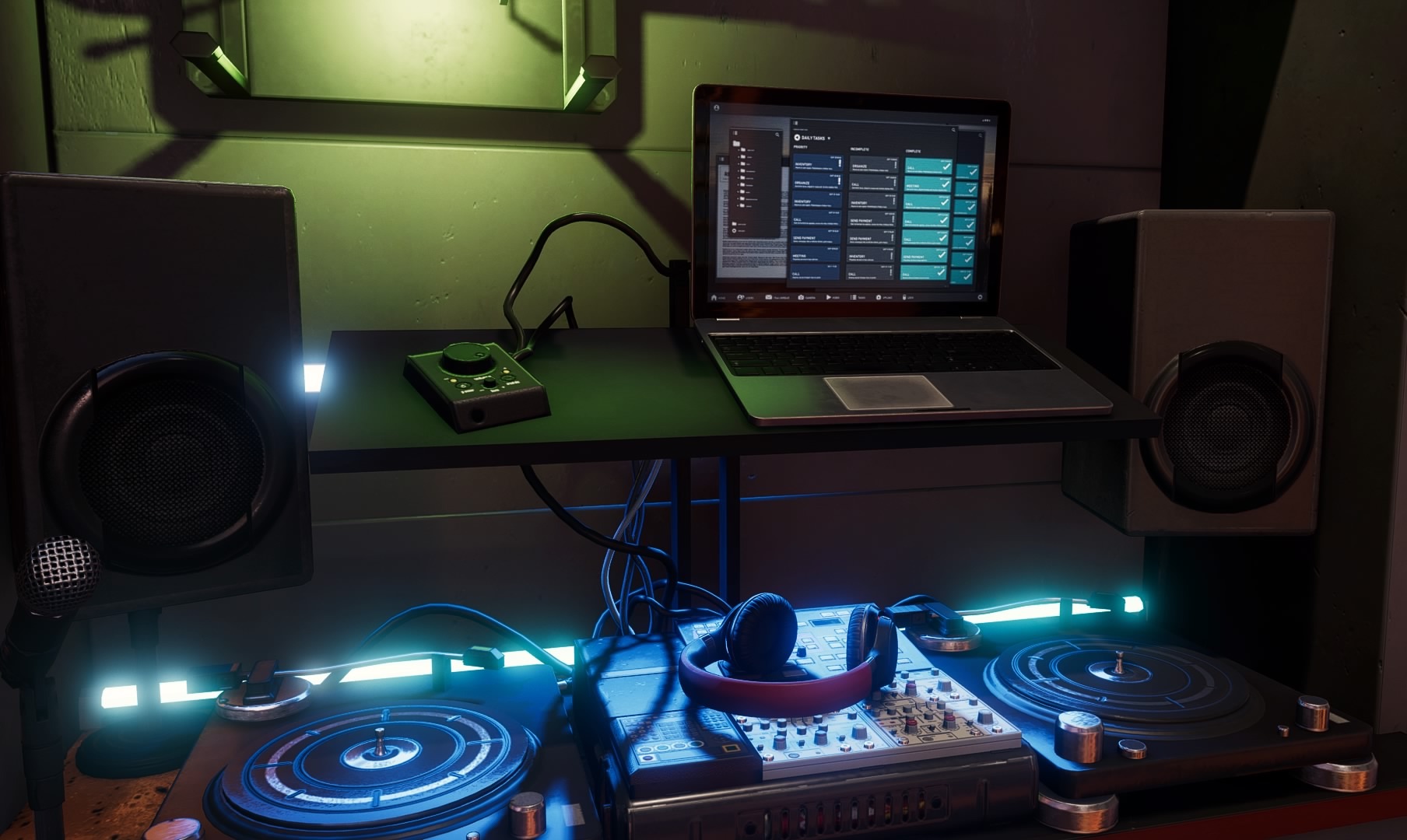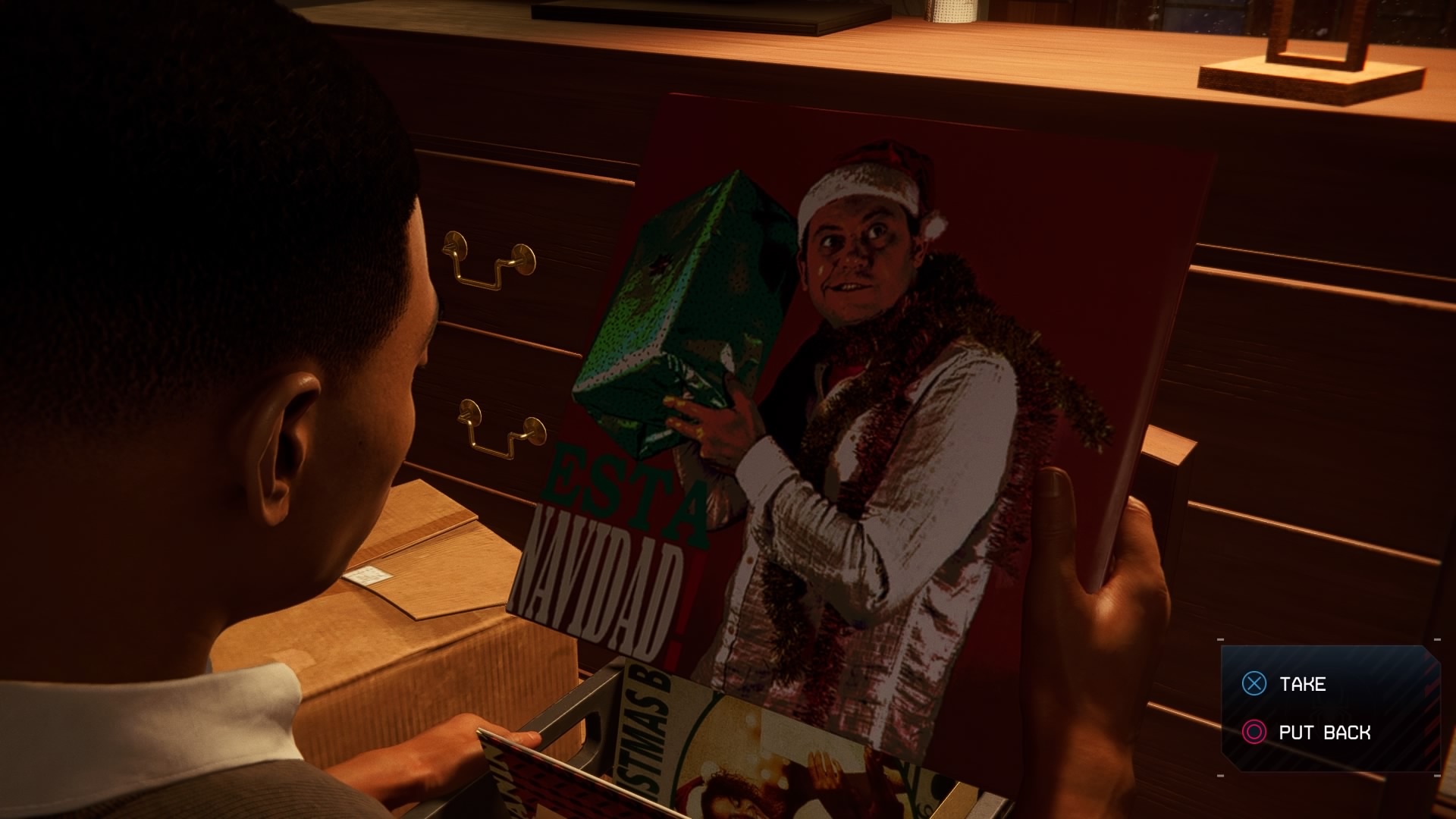The creative team behind Insomniac’s latest video game, Spider-Man: Miles Morales, found a number of different ways to convey to players that Miles and Peter Parker are profoundly different kinds of Spider-Man, despite being driven by similar senses of justice. One of the biggest ways it achieves that is through its use of music.
With a new base of operations and a slew of fancy costumes to call his own, all Miles really needed was a distinct theme to set himself apart from his predecessor from a straight-up branding perspective (something casually mentioned within the game). That particular task fell to John Paesano, who developed a sound befitting New York’s newest Spider-Man.
When Gizmodo spoke with the composer recently about what it was like to score Miles Morales — having done the same for Insomniac’s first Spider-Man title — he explained that while much of his creative process has remained somewhat similar, the studio’s desire to truly give Miles an identity of his own meant finding a way to craft a sound for him that both paid tribute to his character’s origins within the Spider-Man lore while also sounding fresh and true to the spirit of a 17-year-old kid from Brooklyn. Best as Paesano can tell, there’s a new world of superheroes from a younger generation that are becoming more and more of our pop cultural landscape, and that new world has a sound all its own.
Charles Pulliam-Moore, Gizmodo: In your mind, who is Miles Morales as a person? How did his musical tastes become a part of your creative process as you started working on this project?
John Paesano: Miles is such a complex character from the audience’s perspective. He represents so many different things to so many different people, and any time I start a project like this, I’m always trying to find the subtext of the character and things that just aren’t on the surface. Obviously, Miles is from New York City, but to me, he represents everything about this new world of modern superheroes we’ve been shifting into. He embodies this much younger mindset than, you know, many of our legacy Marvel characters who come from this older world. Miles is part of the present, but he’s also part of this bright future that a younger generation is creating.
Gizmodo: How does Miles being part of this new world of heroes factor into your creative approach to him?
Paesano: Miles was way more challenging because he’s way more of a collaborative character, and his story’s so much more complex than a lot of other Marvel characters because there’s this added weight put upon him that comes from representing this new generation of heroes. In terms of finding Miles’ sound, it was tricky because [Spider-Man: Into the] Spider-Verse had just come out, and it would have been so easy to just follow the movie’s musical lead. That’s part of a larger challenge that happens with a lot of these Marvel properties when they get carried over into video games — there’s this large background that’s already been established with them.
Gizmodo: And with a character like Miles who’s so new, Spider-Verse just became the text for a lot of people.
Paesano: Exactly. I didn’t want to fully shut the world of Into the Spider-Verse out completely, but our Miles is his own person. Where Spider-Verse was so fantastical, our Miles and his story needed to feel more realistic, and I wanted that to kind of be reflected in the music as well. The most important thing that I knew was going to be a key element to getting this right was getting people like Boi-1da who were passionate about beat making and producing hip-hop because I didn’t want to just be sitting there by myself faking it.
I’m a film composer by trade and grew up, you know, listening to John Williams. Boi-1da was instrumental in making sure that we got this orchestral sound down that incorporated hip hop correctly. He wasn’t just making beats, but in a few cases, he was a co-producer in many senses to make sure that everything was playing together. It’s funny because when we wrote the score, there’s a lot of odd time signatures and syncopated stuff that’s not very straightforward, but hip-hop can be so much more direct, musically, and it was so fun to work with him because we both kind of brought each other outside of our comfort zones, which yielded just a really cool mesh of sounds and worlds.
We’re not just being true to this idea we have of the “superhero sound,” but also to the complex fabric of Miles’ musical tastes that’s part of where he comes from. His father’s African American, and his mother’s Puerto Rican, and we wanted him to have a wide palette in terms of musical influences because our Miles is young and hip, but he’s also this old soul we imagined listening to music that your regular 17-year-old might not necessarily be into.

Gizmodo: You totally get that in those moments when the game brings you into the apartment just to flip through the vinyl collection. As insignificant as it seems, you’re like, these are definitely albums that he knows. You mentioned earlier about this new world versus old-world sound. And I kind of want to dig into that a little bit. To your mind, what does the old world of superheroes sound like, you know, in that world? Would you categorise things like Defenders as being part of that world?
Paesano: I think Daredevil and Defenders are a little bit more hybrid, but let’s go old school for a minute and talk about Superman. Back in the day, all guys had — and I say “guys” because those were the only people really working in this industry, and that’s finally changing — was the orchestra for the most part, and everybody kind of had a similar sound. John Williams’ strong suit was writing memorable themes within that space, crafting these really strong motifs and melodic signatures that people could identify and associate with Superman as a character.
As we’ve progressed as a culture, our musical palettes have completely changed, and the orchestra as a whole is really just another instrument to be used. Now we have synths and remixing and DJs adding things in after the fact, and it all adds up to these new colours that help us paint more complex musical pictures. The important thing with Miles was bringing that old, traditional thematic touch to his sound, but accenting it with these elements to create this meshing of the new and old worlds of sound versus…there’s some scores out there, for instance, I can’t hum the theme from Inception, but if I heard it, I would recognise it immediately. Both Inception’s theme and Superman’s theme are very recognisable, but one relies on melodic content versus the other which uses more textural sounds, and I think we tried to blend those worlds with Miles.
Gizmodo: Whereas the first Spider-Man game’s music skewed way more toward that old-world sound.
Paesano: Right, with the first game, even though there were some hybrid elements to it, it was still very, very orchestral, and had this majestic, epic, Marvel-esque feeling to it, which worked for Peter. It wasn’t usable here, though, because it didn’t have this youthful swagger we wanted to associate with Miles. It didn’t feel true to his character. The crazy thing is that they both work really well together, which is going to be obviously important — spoiler alert — for the second game.
Gizmodo: What are some of the creative boundaries with composing for genre projects like this that you feel you’ve really been able to push more with your recent work? What’s the sort of stuff that might not have felt feasible five or 10 years ago?
Paesano: It’s funny, I’m kind of old school in the sense that I start bare, bare bones. I always start from story and just melody. I try to come up with melodic ideas for the character, and I’ll spend weeks just trying to come up with a seven-note melody — moving a note here, moving a note there until it starts to be natural and like it’s always been there. With the newer technology we have available, it’s so easy to get into the minutiae, whether it’s plug-ins or synths, or all these different tweaks you can do in post to develop different riffs on the same core sound. But at the end of the day, I always come back to the importance of the simple melody because it’s so essential to a superhero’s identity.
That’s important across all genres, but with superheroes, in particular, that sound becomes such a vital part of how players emotionally identify certain moments within the game that need to pop. It brings the experience to a whole other level versus if you’re just going with generic action music going throughout the whole thing, it’s hard to hit those moments when you finally accomplish something. This is kind of circling back a long way to your question.

Gizmodo: By all means, keep going.
Paesano: The trickiest thing with game music is it’s kind of broken up into these two spheres. You have cinematics, and then you have the in-game music. A couple of years ago, you kind of always noticed there was such a big difference between the cinematic music and the in-game music because obviously the teams who were implementing the music kind of had to take a four-minute cue and stretch it out for the length of a board or level, which might run you 20 or 30 minutes. It would just get redundant, and the technology just wasn’t around to really make it easy to manipulate tons of stems and to take a chunk of music and make it entertaining for long periods of time. I remember playing games when I was a kid, like Zelda or something, and you just hear the same thing over and over.
Gizmodo: And it’s burned in all of our memories now, yeah.
Paesano: Today, when we write game music, we’re always concerned about vertical layers, meaning like, how many different layers can we stack on top of each other to create a cue? We give programmers more options to turn certain layers on and off in order to vary up the music through time, so if you’re swinging around the city and Miles flies around the corner and sees a boss, different layers that are running through the entire game will turn on and off.
So you have to make sure that your danger layer can mix with your heroic layer, and they can crossfade into each other seamlessly without bumping the player. You want it to feel seamless. In order to compose music that way, you have to take into consideration a lot of different things. You aren’t necessarily writing to picture the way you would with a film score, but you’re kind of writing more to scenarios that may happen throughout the game and foreseeing the future of what the player might encounter. It’s all very musical, but there’s also this technical element that’s complex, and you can get lost in it.
Gizmodo: But that’s part of the fun, no?
Paesano: I mean the fun thing about it is that you aren’t locked to a picture like you are with film scores. You make sacrifices as you’re writing film scores. That’s why, when you write a film score, only 20 to 30 per cent of it ends up on the soundtrack because the other 70 per cent of it is kind of functional and boring, and not necessarily fun to listen to, whereas with game music, they let us be as thick and rich as possible.
It’s fun to write, and that’s why game soundtracks always make for great soundtracks because they’re always these very, thick and rich musical environments, whereas, you buy the film score for Alien, and it’s all this aleatoric, functional string stuff, and I can’t listen to that on my way to work.
Gizmodo: That was me with Annihilation. You want to listen to the song for that noise, but you listen to the actual song itself and the tones don’t actually come in for such a long time, and you just can’t…
Paesano: I know, and that’s such a perfect example because those sounds work so well in the film to serve this function of making you feel really uneasy and uncertain with what’s happening, but it’s not necessarily great to listen to.
